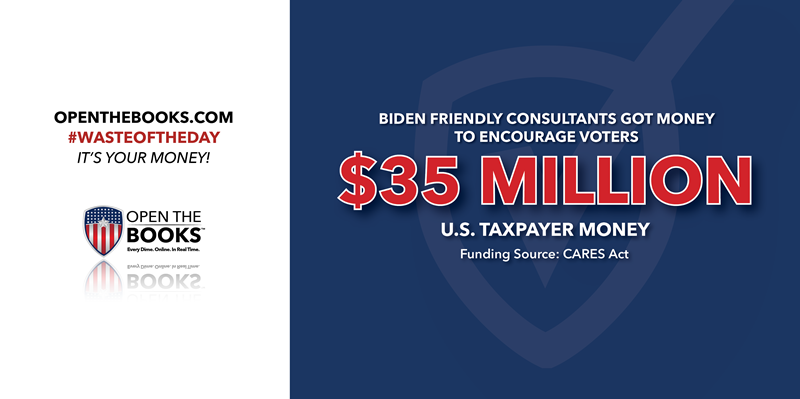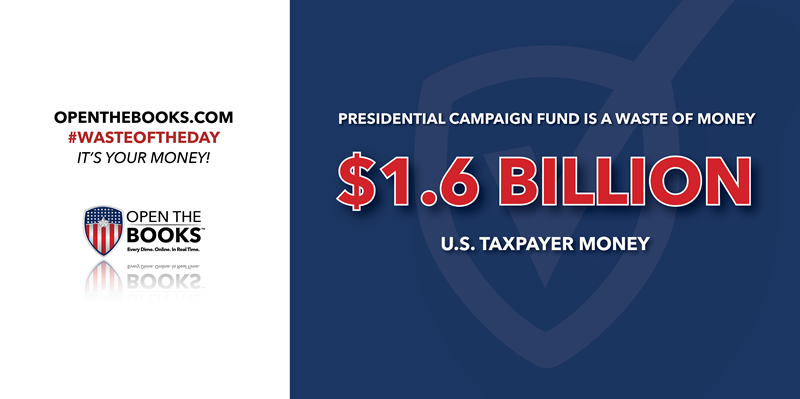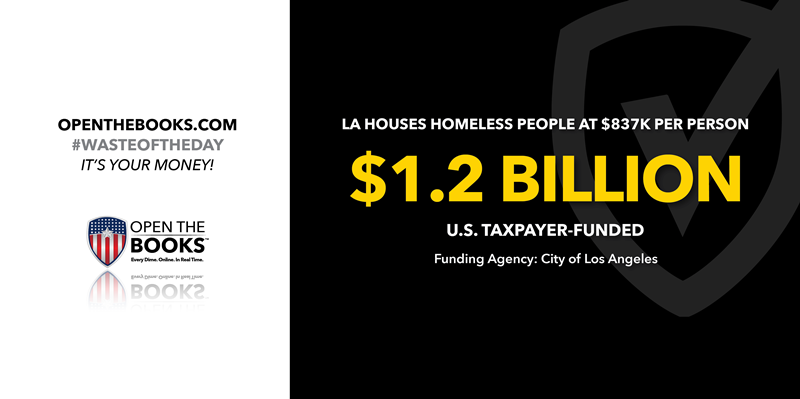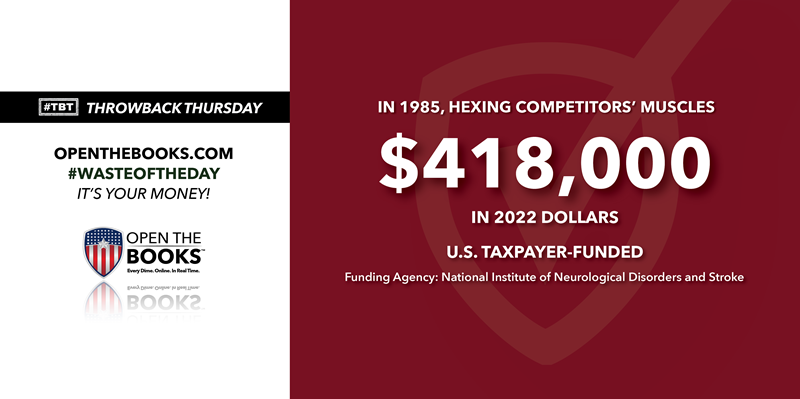
Despite Conflict, Pro-Biden Firm Got $35M Election Contract
March 21, 2022

Correction: A previous version of this story indicated that the Office of the Inspector General did not respond to inquiries concerning the contract. The story has been amended to note a February 9, 2022 letter from the Election Assistance Commission Office of the OIG.
High-powered political consulting firm SKDK improperly received a $35 million contract to encourage people to vote in California in 2020 while one of the founders of the firm was advising Joe Biden’s campaign.
The then-California Secretary of State Alex Padilla awarded the contract to SKDK, known for working with Democratic candidates and whose co-founder Anita Dunn works closely with Biden.
The $35 million was part of a $400 million Help America Vote Act (HAVA) 2020 CARES Act Grant Fund.
But California Controller Betty Yee said Padilla didn’t have the authority to award the funds, only the counties did, and she refused to pay the invoices.
Later, Gov. Gavin Newsom and the state legislature got SKDK its money directly from the state budget.
Newsom later appointed Padilla to fill Vice President Kamala Harris’ newly vacant U.S. Senate seat.
Besides Padilla not having authority to allocate the funds, the $35 million wasn’t supposed to be used for get-out-the-vote efforts.
HAVA gives emergency funds to states to prevent, prepare for, and respond to the coronavirus for the 2020 federal election cycle. It was not to encourage people to vote.
In addition, Padilla awarded the contract to SKDK without following the state’s competitive bidding process, another firm alleged.
Mercury, one of the seven firms that bid on the contract, said SKDK was allowed to submit 49 pages, far beyond the 15-page limit that other firms were held to, and was awarded the contract in an expedited manner.
This was all going on while Anita Dunn was working for Biden’s campaign. Her firm received $35 million — improperly from several angles — to encourage voters to cast ballots.
She later joined the Biden White House as advisor and refused to fill out ethics forms.
Three Congress members, Reps. James Comer (R-Ky.), Rodney Davis (R-Ill.) and Jody Hice (R-Ga.), wrote several letters: first to Padilla, then to one inspector general of the U.S. Election Assistance Commission, then to that IG’s successor, as well as to a commissioner of the commission, highlighting how the $35 million was illegally spent.
Nearly five months passed before the government responded to the multiple oversight letters from the members. On February 9, 2022, the Election Assistance Commission Office of the Inspector General posted a reply online indicating that nothing was amiss in the awarding of the contract.
With such a blatant conflict of interest being allowed, it’s no wonder Americans don’t trust the fairness of our elections.
Presidential Election Campaign Fund Has Spent $1.6B
March 22, 2022

In the last 50 years, more than $1.6 billion has been paid out of the publicly-funded Presidential Election Campaign Fund to finance U.S. presidential campaigns. Currently, the fund holds more than $400 million.
The Federal Election Commission administers the fund and says it exists to provide public funding for presidential campaigns that agree to limit overall spending and private donations. It’s funded voluntarily by taxpayers who check a box on their yearly tax returns to donate $3.
But no major party candidate running in the general election has accepted these public funds in more than a decade. That’s because the funds are very limited compared to what candidates can raise on their own by collecting private donations.
The FEC matches donations that candidates receive — which were limited to about $52 million in 2020.
In the primary and the general elections, the FEC limits candidates to a meager $50,000 of their personal funds in each race.
While this used to make sense, current political realities make this funding obsolete. In the 2020 general election, Donald Trump’s campaign spent $710 million, and Joe Biden’s campaign spent more than $1 billion. Clearly, no candidate can be a serious contender today if they accept public funding.
Candidates understand this. No presidential contender since 2016 Green Party candidate Jill Stein has taken public funding. She received 1.1 percent of the popular vote, and no electoral votes. No candidate since George W. Bush in 2004 has had a successful bid after taking public funding. What remains is welfare for politicians that want to run for president, despite having no chance at winning.
Sen. Joni Ernst has introduced the Eliminating Leftover Expenses for Campaigns from Taxpayers (ELECT) Act to end the fund and put the remaining balance toward deficit reduction.
Los Angeles Spending Up to $837K to House One Homeless Person
March 23, 2022

Los Angeles has dedicated $1.2 billion to a new program fighting homelessness, but instead of maximizing the budget’s impact, they city is spending up to $837,000 per unit to house homeless people.
An audit released by Los Angeles City Controller Ron Galperin shows that Proposition HHH, a ballot measure that issued a $1.2 billion bond to fight homelessness in 2016, has been an abject failure.
The audit states that “more people are unhoused today than when Prop. HHH passed in 2016.” Plagued by high costs and major delays, Proposition HHH has left taxpayers with a $1.2 billion bill, and even more homelessness.
One of the most egregious parts of the report shows the cost of new units being built to house homeless residents. Most units being built are meant to accommodate one person.
There is at least one building in the predevelopment phase that is expected to cost $837,000 per unit. Another 12 projects being planned or built are expected to cost more than $700,000 per unit, and another 41 will cost more than $600,000 per unit.
Despite the measure passing more than five years ago, only 18 projects have been completed so far. Another 65 projects are under construction and 27 projects are still in the predevelopment stage.
In response to ballooning costs and delays in completion, the city controller recommended that the city speed up the review process, acquire and convert existing buildings for housing, build interim housing using available funds, and reevaluate expensive or stalled projects before finalizing loans. Of these, the City of Los Angeles has only decided to implement the first two.
Apparently, reassessing out-of-control spending is too much to ask from Los Angeles.
Throwback Thursday: U.S. Spent $160K to See if Hexes Work
March 24, 2022

Throwback Thursday!
In 1985, what was then known as the National Institute of Neurological and Communicative Disorders and Stroke spent $160,000 — more than $418,000 in 2022 dollars — to study if someone could successfully hex an opponent.
For this study, Sen. William Proxmire, a Democrat from Wisconsin, gave what’s now the National Institute of Neurological Disorders and Stroke a Golden Fleece award for wasteful and nonsensical spending.
The study looked at whether someone could hex an opponent during a strength test by drawing an X in front of the other person’s chest.
“The Institute is paying to determine whether a hulking, muscle bound subject will lose in a strength test, like arm wrestling, to an obviously weaker opponent,” he said sarcastically in a press release. “That opponent, however, knows a secret – making an ‘X’ causes those muscles to turn into jelly.”
It continues, “The Institute is sponsoring a series of tests. In one case, the spaghetti arms will be tested against the hulk’s without performing the ‘X’. Other times, they will use this secret technique and see if they do better.”
In addition to making an X, researchers also tested whether sapping the energy of the opponent could be an effective tactic.
In a memo to justify this spending, the Institute argued, “…the phenomenon under investigation cannot be understood or explained by information currently available and it is of obvious interest to determine what other heretofore unknown factors or mechanisms significantly influence muscle strength and movement…”
Studying muscle function would have been of obvious interest to the Institute. But Proxmire had the right idea when he claimed that the only people who were being sapped of strength were the taxpayers.
U.S. Grants $30,000 to China to Make Anti-Climate Change Art
March 25, 2022

With curbing climate change one of its top priorities, the Biden administration’s State Department has allocated $30,000 for a grant aimed at helping Chinese citizens be more mindful of climate change.
One may think that the best way to achieve this goal is by funding educational initiatives, contributing to renewable energy investments, or funding a public relations campaign to increase awareness.
Not according to the U.S. State Department. Instead, it created a grant to “bring together Chinese and American artists to create collaborative work that displays positive visions of our collective climate futures.”
It is no mystery why the U.S. would want to target China in its mission to curb carbon emissions. China leads the world in carbon emissions, and its commitment to reducing emissions would be critical in tackling climate change, as President Biden has pledged to do. But is making artwork really the best way to go about it?
The grant says, “This project aims to bring together two groups of Chinese and American artists to collaboratively create two pieces of artwork that portray a vision of a future in which humanity has successfully adapted to the climate crisis and reached zero emissions through technological and behavioral change.”
It continues to say that the art will be on display on the walls of the U.S. Consulate General in Guangzhou for at least six months. Artists in China should attend the opening and workshops/activities for social change.
We don’t think anybody truly believes that this project will have any impact on climate change or U.S.-Chinese relations. Leave it to bureaucrats to dance around multiple productive ways to fight climate change to find one that doesn't.
The #WasteOfTheDay is presented by the forensic auditors at OpenTheBooks.com.